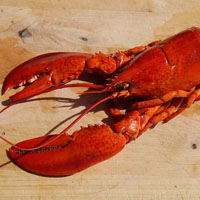Evaluation of the marketing methods and handling of live shellfish (American lobsters) for the purpose of sale as food: First evaluations in Piedmont, Italy

Accepted: 10 February 2020
HTML: 13
All claims expressed in this article are solely those of the authors and do not necessarily represent those of their affiliated organizations, or those of the publisher, the editors and the reviewers. Any product that may be evaluated in this article or claim that may be made by its manufacturer is not guaranteed or endorsed by the publisher.
Authors
Some species of crustaceans pose problems during marketing, being sold alive. Food Business Operators (FBO) have the need to adopt specific measures based on opinions and guidelines of national and international associations. This investigation was aimed at evaluating the practices in use in the marketing of live crustaceans in Piedmont. Twenty-three plants were analyzed using checklists and through physical and chemical measurements of the water in the holding tanks. The situation appears uneven in the application of Good Handling Practices (GHP), management of animals and knowledge of FBO. Only 48% of the Hazard Analysis and Critical Control Point plans had a dedicated section. Immobilization of the claws was the option identified to control aggressiveness. Dead animals are mainly identified as Category 3 instead of other hygienically safe options. Only 1/3 of interviewed can indicate the slaughtering methods recognized as most suitable for these animals. The aquariums show a good state of maintenance and most of evaluated parameters complaint to GHP except for nitrites (35%). In conclusion, the situation reflects the different levels of knowledge of the FBOs. Therefore the veterinarian of the public health service can propose itself as a reference point for specific training.
How to Cite
PAGEPress has chosen to apply the Creative Commons Attribution NonCommercial 4.0 International License (CC BY-NC 4.0) to all manuscripts to be published.

 https://doi.org/10.4081/ijfs.2020.8410
https://doi.org/10.4081/ijfs.2020.8410



